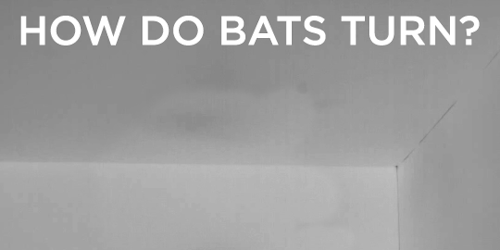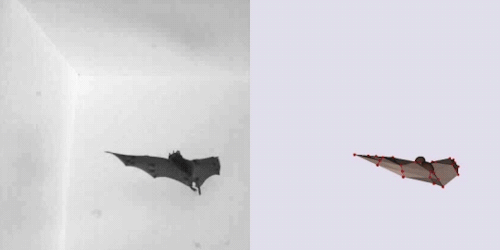The Geniuses At MIT Have Created A Wi-Fi Network So High-tech It Doesn’t Need A Password

The geniuses at MIT have created a Wi-Fi network so high-tech it doesn’t need a password
Researchers at the Massachusetts Institute of Technology want to change how we connect to Wi-Fi. To avoid the cumbersome network login process, a team has come up with a way to grant computers access to a Wi-Fi network based on their proximity to a router. But what about security?
Follow @the-future-now
More Posts from Curiositytherover and Others
Where did the stars go?
One day, you find time to get out of the clutches of your work life and you decide to gaze at the stars.
Something which you used to do when you were a kid.
But the city life with all its glory has diverted you to other ‘fun’ things.

But to your amazement you find that the density of stars has drastically decreased.
‘That’s preposterous’- you say to yourself. That can’t be true.
You are positive that it has something to do with you aging.

You decide to go to your eye doctor and do a thorough check up. The doctor concludes that your eye sight is perfect.

You are delighted, knowing that your eye sight is perfect and that you are going to see those stars again. You spend all day lamenting about it.
You crave for the starry night sky. And you are sure it would look like so :

So, the following night you go to the terrace to rejoice at the sight. But yet see that the sky is not starry at all as you had marveled.
In fact, there is a stark difference between what you had in mind and what you observe.

You get increasingly concerned about it. You ask a few people around and you find out that the answer to this mysterious phenomenon is Light Pollution..
And you start to explore this new bizarre form of pollution.
What is Light Pollution?
Alteration of natural light levels in the outdoor environment owing to artificial light sources.
What does it do?
The impact of light pollution is to reduce our eye’s limiting magnitude. That means that we can see fewer and fewer stars.

The differences in the number of stars that can be seen due to varying levels of background light pollution.
Light pollution competes with starlight in the night sky for urban residents, interferes with astronomical observatories, and, like any other form of pollution, disrupts ecosystems and has adverse health effects.
Light pollution is a side effect of industrial civilization. Its sources include building exterior and interior lighting, advertising, commercial properties, offices, factories, streetlights, and illuminated sporting venues.
How can I prevent it?
(Light Pollution and How to Reduce It)
The solution does not involve curtailing nightlife, hampering the nighttime economy or compromising safety. It just requires directing lights where they’re needed and eliminating waste.
Here what you can do prevent light pollution.
1) Only turn on outdoor lights when needed—or install motion sensors.

2) Point the lights downward and outfit them with “shields” to prevent light from traveling sideways. The goal is to shine them only where illumination is wanted—not in people’s eyes or on other people’s property (a case of “light trespass”).

3) Lower the wattage of your bulbs and put them on dimmers. Bright lights and dark shadows don’t improve safety, but reduce it.

4) Close curtains at night to keep indoor light in. If you live in a multi-story building, use black-out curtains to prevent bird crashes.

And, of course, please use energy-efficient lights to cut global warming emissions even more than you’ll be doing already.
Inspiration :
Here’s what the night sky looks now, with light pollution.

And here’s how it will look like without it.

This post is to educate all the followers of the blog about Light Pollution, and raise awareness about it.
“Stars can’t shine without Darkness”
and hence i urge you to do your part to curbing Light Pollution.
Have a good day :)
PC: NASA, classroomclipart, Umut Siliman, eschooltoday,medscape
Can we talk about this?
So there’s this physics journal that uses math and science to discuss the realities of fictional universes in a super legit, peer-reviewed manner?
And they did a thing on Frozen?

Combining research on the film?

With info on how water works and stuff?

Then applied math and chemistry (and other things in which I am not especially well versed) to reach this conclusion:

So.


Flying Through an Aurora, another astounding image captured by ESA astronaut Alexander Gerst http://space-pics.tumblr.com/

Following cancer with tiny magnets
Life-saving surgery and treatments rely on doctors being able to accurately track the spread of cancers.
A new device that uses iron particles and a magnetic probe will allow clinicians to narrow down exactly which lymph nodes tumours spread to.
Developed by Aidan Cousins with colleagues at the University of South Australia, the novel approach is more sensitive and safer than existing methods for monitoring cancer.
“Pre-clinical trials of our approach suggest it gives a very clear picture of where tumours are most likely to spread,” Aidan explained.
“It will allow subsequent surgery and treatment options to be refined for better standards of care and improved prognosis.”
The technique involves injecting biodegradable iron particles at the primary site of a tumour, from where – as part of their normal surveillance activities – cells of the immune system transport them to the draining lymph nodes.
More information: A. Cousins et al. Novel Handheld Magnetometer Probe Based on Magnetic Tunnelling Junction Sensors for Intraoperative Sentinel Lymph Node Identification, Scientific Reports (2015). DOI: 10.1038/srep10842
Electron microscopic image of a single human lymphocyte. Credit: Dr. Triche National Cancer Institute



A new study (published in PLOS Biology) investigated how bats make sharp turns in the air, particularly when they have to grab the ceiling. It turns out aerodynamics have very little to do with it - it’s all about inertia. Just as a figure skater clutches his arms to his chest to increase his speed, bats pull in their wings to help them make turns.
You can read all about it (and see more video) in this piece by my friend Nsikan Akpan over at PBS Newshour.

The size of the Orion spacecraft vs Apollo.

Using copper to prevent the spread of respiratory viruses
New research from the University of Southampton has found that copper can effectively help to prevent the spread of respiratory viruses, which are linked to severe acute respiratory syndrome (SARS) and Middle East respiratory syndrome (MERS).
S. L. Warnes, Z. R. Little and C. W. Keevil. Human coronavirus 229E remains infectious on common touch surface materials. mBio, November 2015 DOI: 10.1128/mBio.01697-15
This is human coronavirus 229E being inactivated on copper. Credit: University of Southampton

Measuring the Life of a Human: What Events Will We Miss?
When compared to the life of the universe, the life of a human only lasts the span of a single blink. So, what won’t we get to see?
Find out at: http://futurism.com/videos/measuring-life-human-events-will-miss/

Scientists Are Working on a Real-Life Invisibility Cloak
An actual invisibility cloak? We may be getting close. Scientists at the University of Rochester have created the “Rochester Cloak,” a device that effectively makes the object behind it invisible by making light move around it. http://futurism.com/videos/scientists-working-real-life-invisibility-cloak/

Artificial Intelligence Program Passes Entrance Exam, Can Be Accepted Into University
The National Institute of Informatics has developed an Artificial Intelligence (AI) program that was able to achieve an above-average score on a college entrance exam for the first time ever. The test covered five subjects including Math, Physics, and English.
Ultimately, the Institute is attempting to develop an AI that could perform well enough on Japan’s standardized college entrance exam to be accepted into the University of Tokyo, Japan’s highest-ranked university. And they hope to complete their task by 2021.
To date, the AI received a top score of 511 points out of 950, which is above the national average of 416 points.
According to the institute, the AI has at least an 80% chance of being accepted to 441 private universities and 33 national universities with that score, odds that would make any aspiring student quite happy.
Find out more at: http://futurism.com/links/artificial-intelligence-program-passes-entrance-exam-can-be-accepted-into-university/
-
 cosmic-shark liked this · 8 years ago
cosmic-shark liked this · 8 years ago -
 aerstic-spire reblogged this · 8 years ago
aerstic-spire reblogged this · 8 years ago -
 coffeeandengineering reblogged this · 8 years ago
coffeeandengineering reblogged this · 8 years ago -
 fl-ux liked this · 8 years ago
fl-ux liked this · 8 years ago -
 the-major liked this · 8 years ago
the-major liked this · 8 years ago -
 lady-charlotina reblogged this · 8 years ago
lady-charlotina reblogged this · 8 years ago -
 nickokabab liked this · 8 years ago
nickokabab liked this · 8 years ago -
 10condra15 reblogged this · 8 years ago
10condra15 reblogged this · 8 years ago -
 midnightglow liked this · 9 years ago
midnightglow liked this · 9 years ago -
 spaceisgayculture liked this · 9 years ago
spaceisgayculture liked this · 9 years ago -
 itsrinox liked this · 9 years ago
itsrinox liked this · 9 years ago -
 thinkingupblognamesishard reblogged this · 9 years ago
thinkingupblognamesishard reblogged this · 9 years ago -
 1031-95 liked this · 9 years ago
1031-95 liked this · 9 years ago -
 oshinytomato reblogged this · 9 years ago
oshinytomato reblogged this · 9 years ago -
 aneverlandboi liked this · 9 years ago
aneverlandboi liked this · 9 years ago -
 digitalexpansion reblogged this · 9 years ago
digitalexpansion reblogged this · 9 years ago -
 deethegeek liked this · 9 years ago
deethegeek liked this · 9 years ago -
 lightningpeach reblogged this · 9 years ago
lightningpeach reblogged this · 9 years ago -
 felalalieisafeminist liked this · 9 years ago
felalalieisafeminist liked this · 9 years ago -
 pinklessons reblogged this · 9 years ago
pinklessons reblogged this · 9 years ago -
 dead-and-gone00000 liked this · 9 years ago
dead-and-gone00000 liked this · 9 years ago -
 lookingupatthesky liked this · 9 years ago
lookingupatthesky liked this · 9 years ago -
 captnawsm liked this · 9 years ago
captnawsm liked this · 9 years ago -
 raunasiili-blog liked this · 9 years ago
raunasiili-blog liked this · 9 years ago -
 knarfire reblogged this · 9 years ago
knarfire reblogged this · 9 years ago -
 thescientificlolita liked this · 9 years ago
thescientificlolita liked this · 9 years ago -
 jazzy22jm liked this · 9 years ago
jazzy22jm liked this · 9 years ago -
 andromeda-ace liked this · 9 years ago
andromeda-ace liked this · 9 years ago -
 dyvyn liked this · 9 years ago
dyvyn liked this · 9 years ago -
 45-mm liked this · 9 years ago
45-mm liked this · 9 years ago -
 deafeningstarfishcollector reblogged this · 9 years ago
deafeningstarfishcollector reblogged this · 9 years ago -
 deafeningstarfishcollector liked this · 9 years ago
deafeningstarfishcollector liked this · 9 years ago -
 dreamandgrind liked this · 9 years ago
dreamandgrind liked this · 9 years ago -
 spiritinthedarkness liked this · 9 years ago
spiritinthedarkness liked this · 9 years ago -
 fridawaterfall reblogged this · 9 years ago
fridawaterfall reblogged this · 9 years ago -
 wavesbreakoverhead reblogged this · 9 years ago
wavesbreakoverhead reblogged this · 9 years ago